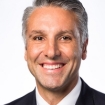
Download the report
Protecting the perimeter: A new frontier of platform fraud
Platforms have become an integral part of our daily lives. Social media platforms connect us, e-commerce platforms give us access to goods and services, and enterprise platforms help organisations to interact with us as consumers and process our transactions. The shift towards platforms accelerated during the coronavirus pandemic as businesses switched to delivery and contactless payments to enable them to continue serving their customers behind closed doors.
51% of surveyed organisations say they experienced fraud in the past two years, the highest level in our 20 years of research.
PwC’s Global Economic Crime and Fraud Survey 2022 shows that the average organisation now operates four platforms. However, the survey of 1,296 executives across 53 countries and regions also shows that fraudsters have also been quick to respond to the rise in platforms and expose any cracks in the perimeter.
40% of those organisations encountering fraud experienced platform fraud.
Fraudulent transfers to or from a platform are the most common type of platform fraud, comprising more than three-quarters of all incidents. While PwC’s Global Economic Crime and Fraud Survey demonstrates C-suite concern about the rise in platform fraud, business leaders also reveal a general lack of understanding regarding their risk exposure. So, what can your organisation do to protect yourself against this new frontier for fraud and economic crime?
Read the full report to learn more.
Understand your platform risks by taking our survey.
Platform fraud requires executive attention and an integrated, enterprise-wide response strategy with a focus on resilience as its foundation.
Risk leaders need to be proactive and design a meaningful strategy to identify, assess and execute a fraud response – because the consequences can be devastating.
Establish controls to reduce your risk. Conduct a risk assessment to determine your exposure and establish protocols for gaining visibility into platforms you work with.
Know your environment and know your capacity for managing risk – particularly emerging risks, in addition to fraud, that aren’t necessarily on the radar.








